RESTORATIVE DENTISTRY
DENTAL FILLINGS
A filling is used to treat a small hole, or cavity, in a tooth. To repair a cavity, the dentist removes the decayed tooth tissue and then fills the space with a tooth-colored (composite) filling material.
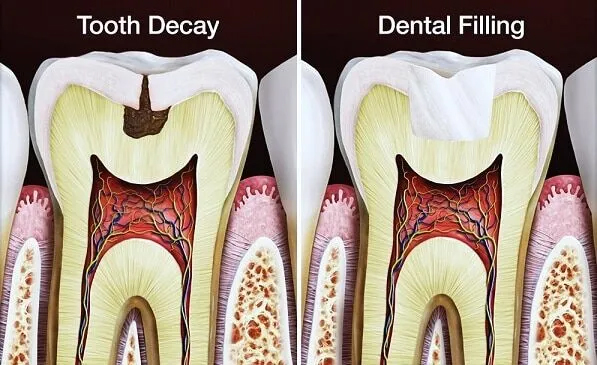
Causes
When decay-causing bacteria come into contact with sugars and starches from foods and drinks, they form an acid. This acid can attack the tooth’s surface (enamel), causing it to lose minerals.
When a tooth is repeatedly exposed to acid, such as when you frequently consume food or drink high in sugar and starches, the enamel continues to lose minerals. A white spot may appear where minerals have been lost. This is a sign of early decay.
Tooth decay can be stopped or reversed at this point. Enamel can repair itself by using minerals from saliva and fluoride from toothpaste or through the application of fluoride by a dentist or dental hygienist. If more minerals are lost than can be restored, the enamel weakens and eventually breaks down, forming a cavity.
More severe decay can cause a large hole or even destruction of the entire tooth. If tooth decay is not treated, it can cause pain, infection, and even tooth loss.
Treatment
Although it’s best to prevent a cavity, a cavity can be fixed. At Bridgeland Dental Care we restore the cavities with tooth-colored (composite) fillings. Composite resin materials are increasingly used by dentists to fill teeth because many people prefer tooth-colored fillings and because composites continue to improve.
There are also treatments called crowns (or caps), used to repair badly broken-down teeth. Crowns can be made of gold or other metals, porcelain, or stainless steel (usually used on baby teeth).
Generally, dental fillings and crowns do not last a lifetime and may need to be replaced.
Considering Dental Fillings?
If left untreated, cavities and tooth decay can lead to serious oral health problems such as periodontal disease and jaw bone deterioration. If you notice toothaches or tooth sensitivity, you may require dental fillings. Our team at Bridgeland Dental Care offers composite dental fillings. Please contact our clinic to book your consultation today!
DENTAL CROWNS
What is a dental crown?
A dental crown is a tooth-shaped cap. Dentists use crowns to restore weak, broken or decayed teeth.
A crown fits over your entire tooth, like a snug hat. To ensure a proper fit, a dentist will need to remove a small amount of enamel before bonding your new crown in place.
Dental technicians craft crowns from a variety of materials, including resin, metal and porcelain.
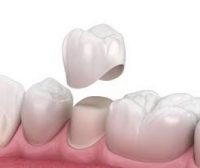
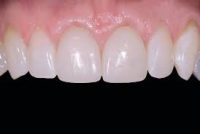
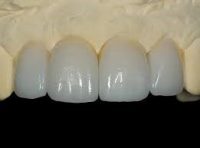
When would you need a dental crown?
Crowns serve several purposes. You may need a dental crown to:
- Strengthen a weak tooth.
- Protect and support a cracked tooth.
- Restore a worn-down or broken tooth.
- Hold a dental bridge in place.
- Cover a severely stained or discolored tooth.
- Cover a root canal -treated tooth.
- Cover a dental implant.
Types of dental crowns we offer at Bridgeland Dental Care
There are many types of dental crowns. The kind that’s right for you depends on your personal preferences and unique oral health needs.
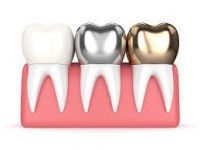
All-ceramic or porcelain crowns
All-ceramic or porcelain crowns mimic the appearance of tooth enamel more than any other crown type. They’re also a good choice if you have metal allergies.
Lab technicians use many different materials to make ceramic crowns, but one of the most popular is zirconium dioxide. Zirconia crowns are extremely durable and can withstand heavier forces than other types of ceramic crowns. They’re also gentle on your opposing teeth, resulting in less enamel wear.
Metal crowns
Dental technicians use several metals to make dental crowns, including gold, palladium, nickel and chromium. Metal crowns rarely chip or break, last the longest in terms of wear and only require a small amount of enamel removal. They can also withstand biting and chewing forces.
The metallic color is the main drawback of this type of crown. Metal crowns are a good choice for out-of-sight molars.
Procedure Details
What happens during a dental crown procedure?
Dental crown placement usually requires two appointments:
FIRST VISIT
- Preparing your tooth. To prepare your tooth for a crown, your dentist will need to remove some of your natural enamel. This makes space for your new crown and ensures that it will stay in place once bonded. Your dentist may also use a filling material to build up certain parts of your tooth. During this step, the main goal is to create a strong foundation for your new crown.
- Dental impressions. Next, your dentist will take impressions of your teeth. These may be physical impressions taken with a putty-like material or digital impressions taken with a handheld scanner. At Bridgeland Dental Care we use mostly digital impressions with our high-tech scanner, we will then send these impressions to our dental lab. There, a technician will use them to create your custom dental crown.
- Temporary crown placement. It usually takes one to two weeks for a dental lab to make your new crown. While you wait on your final crown, your dentist will place a temporary one. Temporary crowns are usually made of resin or acrylic.
SECOND VISIT
When the lab finishes your new crown, they’ll send it back to our office. During a second office visit, your dentist will:
- Remove your temporary crown.
- Check the shape, color and fit of your new crown.
- Bond the new crown to your tooth using a strong dental cement.
What are the benefits of dental crowns?
The most notable advantage of a dental crown is that it can prolong the life of a natural tooth. Specifically, crowns can:
- Treat worn, broken or decayed teeth.
- Protect teeth from erosion (wear and tear).
- Improve chewing function.
- Enhance your appearance.
What are the disadvantages of dental crowns?
There are also some disadvantages. For example, crowns:
- Require some removal of natural tooth enamel.
- May cause teeth sensitivity, especially in the first few weeks after placement.
- Can break or fracture over time. (very rare)
DENTAL INLAYS AND ONLAYS
What Are Dental Inlays and Onlays?
Our dentists at Bridgeland Dental Care, also offer dental inlays and onlays for patients to repair moderately damaged or decayed teeth. These restorations are made from porcelain, gold or composite materials for restorative purposes.
Dentists may offer dental inlays and onlays when a tooth is extensively damaged to be repaired with a filling but does not qualify for a crown. These restorations can save a healthy portion of the injured tooth and provide strength and stability for normal chewing.
A dental inlay will be placed in the center of the tooth and a dental onlay is placed on the inside and outer areas of the tooth. They are often referred to as indirect fillings or partial crowns. Dental inlays and onlays are a less aggressive treatment option compared to dental crowns.
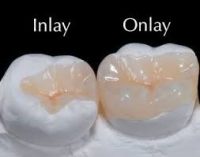
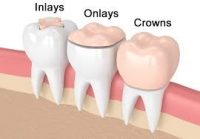
Interested in Dental Inlays and Onlays?
Depending on your needs, dental inlays and onlays may be a great option for you. At Bridgeland Dental Care, we offer dental inlays and onlays. Please contact us today to learn more about this innovative restorative dentistry treatment.
DENTAL BRIDGES
What is a dental bridge?
Dental bridges replace missing teeth. Specifically, they can replace one tooth or a row of missing teeth.
At Bridgeland Dental Care, we create custom bridges that match the shade of your natural teeth.
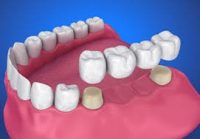
Types of dental bridges
We use different types of bridges based on your oral health goals. The main four types of dental bridges include:
- Traditional dental bridge. This is the most commo
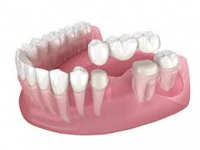 n type of dental bridge. It consists of dental crowns (caps) on both ends with pontics (artificial teeth) in between. A dentist bonds the crowns to your natural teeth (abutments) on either side of the gap, and the artificial teeth (pontics) fill in the space between. Dentists use traditional dental bridges when you have healthy natural teeth on both sides of the gap.
n type of dental bridge. It consists of dental crowns (caps) on both ends with pontics (artificial teeth) in between. A dentist bonds the crowns to your natural teeth (abutments) on either side of the gap, and the artificial teeth (pontics) fill in the space between. Dentists use traditional dental bridges when you have healthy natural teeth on both sides of the gap.
- Cantilever dental bridge. A cantilever bridge is
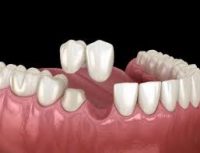 similar to a traditional bridge. But there’s only a crown on one end, not both. So, when your dentist bonds the bridge onto your abutment tooth, the artificial tooth (pontic) “hangs over” or extends across the gap. Dentists use cantilever bridges when you only have natural teeth on one side of the gap. Due to their design, cantilever bridges aren’t as strong as traditional bridges.
similar to a traditional bridge. But there’s only a crown on one end, not both. So, when your dentist bonds the bridge onto your abutment tooth, the artificial tooth (pontic) “hangs over” or extends across the gap. Dentists use cantilever bridges when you only have natural teeth on one side of the gap. Due to their design, cantilever bridges aren’t as strong as traditional bridges. - Maryland dental bridge. A Maryland bridge (or resin-
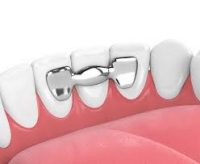 bonded bridge) uses wings instead of crowns to secure your bridge. A dentist bonds the wings to the backs of your neighboring teeth to hold your bridge in place. Dentists typically use Maryland bridges to replace front teeth. These appliances aren’t strong enough to withstand the chewing forces of back teeth.
bonded bridge) uses wings instead of crowns to secure your bridge. A dentist bonds the wings to the backs of your neighboring teeth to hold your bridge in place. Dentists typically use Maryland bridges to replace front teeth. These appliances aren’t strong enough to withstand the chewing forces of back teeth. - Implant-supported bridge. An implant-supported bridge is similar to a traditional bridge, but it rests on dental implants instead of natural teeth. Dental
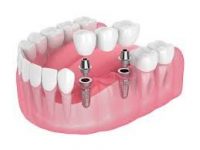 implants are small threaded posts that replace missing teeth roots. Before attaching a bridge to dental implants, your implants must fully integrate (fuse) with your jawbone. This process takes three to six months on average, but it can take longer depending on your situation. Dentists can use implant-supported bridges when you have three or more missing teeth in a row.
implants are small threaded posts that replace missing teeth roots. Before attaching a bridge to dental implants, your implants must fully integrate (fuse) with your jawbone. This process takes three to six months on average, but it can take longer depending on your situation. Dentists can use implant-supported bridges when you have three or more missing teeth in a row.
Interested in Dental Bridges?
If you are missing teeth and are interested in receiving dental bridges, please contact our team at Bridgeland Dental Care. We are happy to offer dental bridges in Calgary to restore our patient’s smiles and confidence. Please contact us to book your appointment today!
DENTAL IMPLANTS
Replacement of Missing Teeth with Dental Implants
Whether you are missing a single tooth, a small number of teeth, or all of your teeth, replacing your teeth with dental implants may be the right fit for you and your lifestyle.
When you leave spaces in your mouth, you increase your chances of developing severe oral health issues such as bite misalignment. Additionally, missing teeth can make it more challenging to participate in simple activities such as eating and speaking. At Bridgeland Dental Care, we offer dental implants as a durable and natural-looking restorative dental treatment.
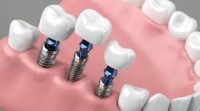
The Benefits of Dental Implants
- Implants help maintain or realign facial structure and profile.
- Implants preserve the bone that is otherwise lost when teeth are removed.
- Dental implants are easy to clean and do not decay.
- Implants help to preserve adjacent natural teeth. With an implant-supported crown or bridge, there is no need to cut down adjacent natural teeth in order to hold a traditional bridge or partial denture in place. Traditional removable partial dentures place stress forces on the remaining natural teeth. Dental implants can eliminate the need to stress adjacent teeth to support a partial denture.
- Implants help to prevent the appearance of premature aging by preventing the bone loss that otherwise occurs after the loss of teeth.
- There is a significant improvement in the overall quality of life for patients who have implant-supported or retained dentures, as opposed to standard or conventional (free-floating) dentures.
- Patients who wear conventional full dentures often experience difficulty eating, speaking and smiling. Implant-supported replacement teeth can eliminate embarrassing denture slippage.
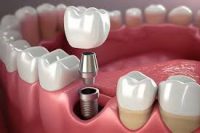
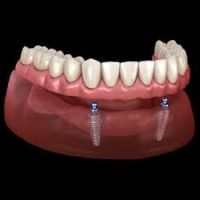
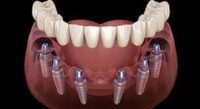
Interested in Dental Implants?
If you are missing teeth, dental implants are an excellent restorative option. Our team at Bridgeland Dental Care is happy to provide our patients with dental implants. Please contact our clinic to book a consultation today!
PARTIAL & COMPLETE DENTURES
Dentures are artificial replacements for your natural teeth and gums. If you have only a few healthy teeth or none at all, your dentist at Bridgeland Dental Care might suggest dentures to replace your missing teeth. There are 2 types of dentures: partial and complete. For both types of dentures we make a model of your teeth by taking impressions. The models are used to custom-make your dentures.
Types of Dentures
Partial Dentures
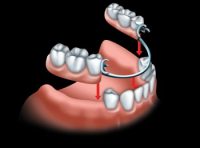
Partial dentures are also called removable partial dentures or partials. They may be used when nearby teeth are not strong enough to hold a bridge, or when more than just a few teeth are missing. Partial dentures are made up of one or more artificial teeth held in place by clasps that fit onto nearby natural teeth. You can take the partial denture out yourself, for cleaning and at night.
Complete Dentures
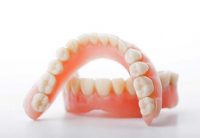 Complete dentures are what we most often refer to as false teeth. They are also called full dentures and are used when all your natural teeth are missing. Complete dentures are removable as they are held in place by suction. They can cause soreness at first and take some time to get used to. There are 2 types of complete dentures: immediate dentures and conventional dentures.
Complete dentures are what we most often refer to as false teeth. They are also called full dentures and are used when all your natural teeth are missing. Complete dentures are removable as they are held in place by suction. They can cause soreness at first and take some time to get used to. There are 2 types of complete dentures: immediate dentures and conventional dentures.
Immediate dentures are a type of complete denture, and are made before your teeth are removed. Your dentist takes measurements and makes models of your jaws during your first visit. Once your teeth are extracted, your dentist inserts the immediate dentures. The benefit of immediate dentures is that you are not without teeth during the healing period, which can take up to 6 months. During the healing period, your bones and gums can shrink and your immediate dentures may need to be relined by your dentist for a proper fit.
Conventional dentures are another type of complete denture, and are made and inserted into your mouth after your teeth have been extracted and the gums and jaw tissues have healed.
Overdentures
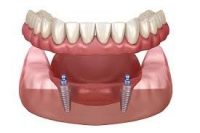 If you are having trouble with your complete dentures, your dentist may suggest overdentures. An overdenture is a removable denture that fits over the natural teeth left in your mouth or over dental implants. If you have some natural teeth left, they are reshaped to fit in the denture. If there are no natural teeth left, small implants are placed into the jawbone. The overdenture attaches to the implants or rests on the natural teeth.
If you are having trouble with your complete dentures, your dentist may suggest overdentures. An overdenture is a removable denture that fits over the natural teeth left in your mouth or over dental implants. If you have some natural teeth left, they are reshaped to fit in the denture. If there are no natural teeth left, small implants are placed into the jawbone. The overdenture attaches to the implants or rests on the natural teeth.
To learn more about your Denture options, we invite you to contact our office for a consultation appointment.
